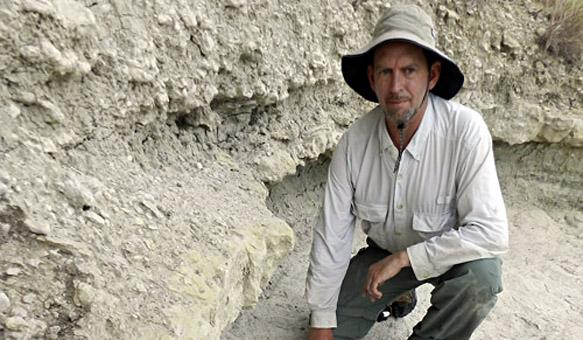Martin said trace fossils, including, but not limited to tracks, eggs, coprolites and urolites, fascinate him.
Scientists use trace fossils to study behavioral changes, such as variations in movement, over long periods of time. They can even calculate hip height and discover how fast the organism moved based solely on its tracks.
“[Trace fossils] are normally much more abundant than bodies,” Martin said. “One dinosaur skeleton had about 200 bones in it. Think about a dinosaur that lives, say, 25, 30 years. How many traces it would have made throughout its lifetime?”
Martin and his colleagues use these traces to understand not only organisms from long ago, but today’s organisms as well.
“I don’t have to be in the past,” he said. “I can go into modern environments and look at what animals are doing today, then compare that to what I have in the fossil record.”
Martin said the evolution of bird nesting might reflect dinosaur nesting. In addition, he discussed the possibility of plant evolution changing course due to dinosaur involvement.
Casey McGuirt, a freshman majoring in finance, said she was surprised by the plethora of non-skeletal fossils Martin discussed.
“I had no idea some scientists considered traces more important than skeletons,” McGuirt said. “I definitely want to attend the next lecture in the series.”
Nicholas Laffey, a freshman majoring in computer science, said the ALLELE talk defied his expectations.
“I was expecting this lecture to be about apes,” he said.
Both McGuirt and Laffey said they would recommend students and members of the community to attend the next lecture.
The ALLELE seminar series is hosted by The University of Alabama’s evolutionary studies club.









